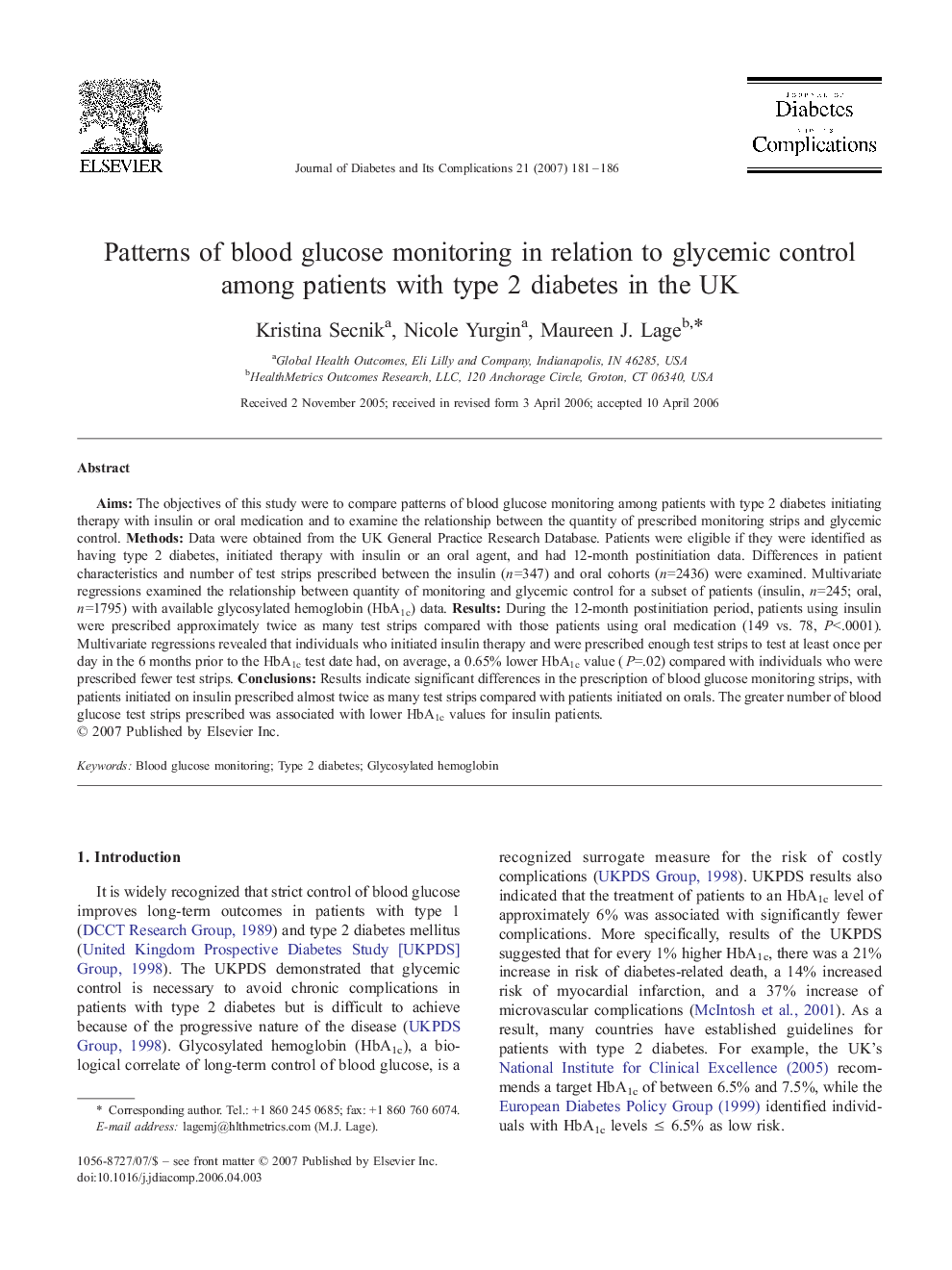| Article ID | Journal | Published Year | Pages | File Type |
|---|---|---|---|---|
| 2804915 | Journal of Diabetes and its Complications | 2007 | 6 Pages |
AimsThe objectives of this study were to compare patterns of blood glucose monitoring among patients with type 2 diabetes initiating therapy with insulin or oral medication and to examine the relationship between the quantity of prescribed monitoring strips and glycemic control.MethodsData were obtained from the UK General Practice Research Database. Patients were eligible if they were identified as having type 2 diabetes, initiated therapy with insulin or an oral agent, and had 12-month postinitiation data. Differences in patient characteristics and number of test strips prescribed between the insulin (n=347) and oral cohorts (n=2436) were examined. Multivariate regressions examined the relationship between quantity of monitoring and glycemic control for a subset of patients (insulin, n=245; oral, n=1795) with available glycosylated hemoglobin (HbA1c) data.ResultsDuring the 12-month postinitiation period, patients using insulin were prescribed approximately twice as many test strips compared with those patients using oral medication (149 vs. 78, P<.0001). Multivariate regressions revealed that individuals who initiated insulin therapy and were prescribed enough test strips to test at least once per day in the 6 months prior to the HbA1c test date had, on average, a 0.65% lower HbA1c value (P=.02) compared with individuals who were prescribed fewer test strips.ConclusionsResults indicate significant differences in the prescription of blood glucose monitoring strips, with patients initiated on insulin prescribed almost twice as many test strips compared with patients initiated on orals. The greater number of blood glucose test strips prescribed was associated with lower HbA1c values for insulin patients.
